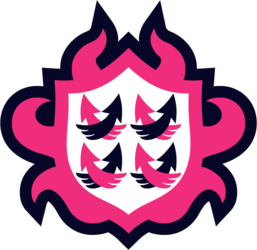League Battle
| Type | Online multiplayer mode |
| Players | 8 (4v4) |
| Controllers | Joy-Con, Nintendo Switch Pro Controller |
| Release Date | Launch (Splatoon 2) |
League Battle is a multiplayer mode in Splatoon 2. It replaces Splatoon's Squad Battles as an option for co-operative ranked play.
League Battles feature the same game modes as Ranked Battles, namely Splat Zones, Tower Control, Rainmaker, and Clam Blitz. The stages and modes for League Battles rotate every two hours and feature a different mode and stages. The stages selected for League Battles are not dependent on the stages in the monthly Ranked rotation.
Overview
For two hours, players team up in a group of two, called a pair, or four, called a team, and compete with other groups to earn as many points as possible. At the end of the two hours, results are shown in a ranking system called League Power that acts the same as other power levels. Players get their initial League Power based on their performance in the first seven matches. Players must be Rank B- or higher in Ranked Battles to participate in League Battles. Unlike Squad Battles, a player's rank does not change, regardless of what rank they are.
Pairs are grouped up with other pairs, with two pairs on a team chosen at random. Teams of four play against other teams of four.
Each pair or team gets their own team ID - therefore, the League Power is mutual to all players in that group. Changing any members of the group results in a new team ID and a new League Power to calculate after seven matches.
Groups that get League Power have their power and possibly ranking displayed in Past Records and in SplatNet 2 fifteen minutes after the rotation ended. Up to four records can be displayed in Past Records. All rankings can be seen in the app, sorted by all regions, Japan, North America & AU/NZ, and Europe, as well as the player's highest League Power for pair and team.
Groups that rank high enough receive commemorative gold, silver, or bronze medals. These medals are awarded to the top 5%, 20%, and 50% of players for that rotation, respectively. The amount of medals obtained for each type in each mode (pair and team) can be seen in SplatNet 2.
Scheduled League rotation - League Rush
During the finals of the fourth Splatoon Koshien Tournament, there was an announcement of a scheduled League rotation.
Since February 2019, every month, there has been a scheduled League Battle rotation announced on the @SplatoonJP Twitter for teams of four with set modes and stages. The top three teams, plus one additional team, receive a unique picture of their characters with their weapons and gear at one of the stages played. The criteria for the additional team cycles every month, alternating between the 101st team, the team with the median score overall, the highest-scoring bronze team, and the 333rd team. All rewards are given based on the ranking for Japan.[Citation needed] The pictures are posted on the @SplatoonJP Twitter.[1]
Splatoon 3
- Main article: Challenge
Before the release of Splatoon 3, League Battle's return was announced for a future post-launch update, to feature the same rules as in Splatoon 2, but with the additional inclusion of "some special modes".[2] Ultimately, League Battle did not return in Splatoon 3 as such, with the announcement of its replacement, Challenge mode, coming during the reveal of Sizzle Season 2023. Challenges also have two-hour ranked play windows, but unlike League Battles, these windows occur only at a few specific times during a season. Solo play is allowed, and the mode is largely focused on unique in-match conditions, such as fog on the stage or reduced gravity when jumping. Once per month, a Monthly Challenge becomes available which follows the rules of the monthly League Rush from Splatoon 2.
Additionally, beginning in Sizzle Season 2023, playing Anarchy Battle (Open) with a team of 2-4 players for at least 5 battles will record Anarchy Power for that team, functioning similarly to League Power in the previous game.
Gallery
-
SplatNet 2 icon
-
Gold medal
-
Silver medal
-
Bronze medal
Names in other languages
| Language | Name | Meaning |
|---|---|---|
| リーグマッチ Rīgu macchi |
League Match | |
| Toernooigevecht | Tournament battle | |
| Match de ligue | League match | |
| Ligakampf | League battle | |
| Partita di lega | League match | |
| Бой лиги Boy ligi |
League battle | |
| Combate de liga | League Combat | |
| Torneo | Tournament | |
| 聯盟比賽 liánméng bǐsài (Mandarin) |
League battle | |
| 리그 매치 ligeu maechi |
League Match |
References
|

